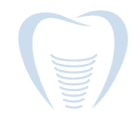The temporomandibular joint (TMJ), is responsible for the articulation of the jaw. When there is discomfort, popping, clicking or other dysfunction of the joint, it is called temporo mandibular disease or TMD. Many etiologies exist, which cause dysfunction of the joint ranging from myofacial pain to arthritis, trauma, and pathology.
The TMJ is a special joint as it is the only joint in the body that has both a hinge and sliding function. It is also known as a ginglymo-arthrodial joint. The TMJ anatomy includes the temporal bone composing the glenoid fossa, articulating disk, and the condyle.
When a patient develops pathology in the joint or surrounding muscles, the patient has temporomandibular disease. A majority of the disease is associated with myofascial pain—the muscles of mastication are involved.
During a patient’s consultation, one needs to discern the details of the individual’s symptoms. A thorough and succinct method of obtaining the history of present illness is by using an acronym OLDCART. This will reveal the onset, location, duration, characteristics, aggravating & alleviating factors, radiation, and timing of their disease.
During the physical exam, one needs a focused exam of the joints. Several areas should be palpated for tenderness including: the temporalis muscle, masseter muscle, TMJ, and medial pterygoid muscle. In addition one should inspect for popping and or clicking. Intra orally, one should determine the maximal incisal opening (MIO)—which is normally 2 ½ – 3 fingerbreadths. The occlusal cusps should be examined for wear, which would indicate grinding and/or clenching.
Multiple imaging modalities are available to view the TMJ. The initial modality would be the panoramic x-ray to inspect for osteophytes, irregular bone contour, decreased joint space and other pathology. For greater detail of the bony anatomy, a dental cone beam will yield greater information. However, for evaluation of the soft tissue, including the disc, surrounding muscles and retrodiscal tissue, an MRI in the open and closed position is desired.
Initial management of TMD includes medical management. It is directed towards decreasing the inflammatory environment of the joint and surrounding structures. Treatments include anti-inflammatory medications, soft diet, warm compress, and a short course of steroid treatment as well as muscle relaxants.
At times when the myofascial pain is a source of the TMD, it can be resistant to medical management. An Additional source of relief is Botox. Botox injection into the masseter as well as temporalis muscle for the correct patient will considerably improve their symptoms. Botox will allow to diminish the force an individual will use to grind and clench, decreasing the force to the joints. However, with administration of Botox, one does not need to be concerned with a patient’s masticatory ability.
For an evaluation of your patient and their joint symptoms, have Dr. Benjamin Yagoubian evaluate and treat their discomfort by calling (310) 373-0667 for an appointment.
Posted on behalf of
23451 Madison St #120
Torrance, CA 90505
Phone: (310) 373-0667
Monday - Friday 8AM - 5PM
